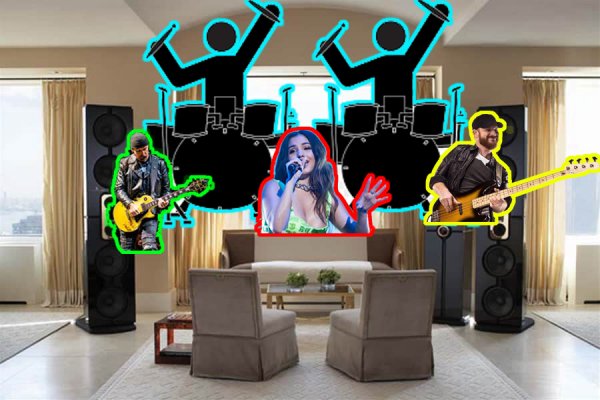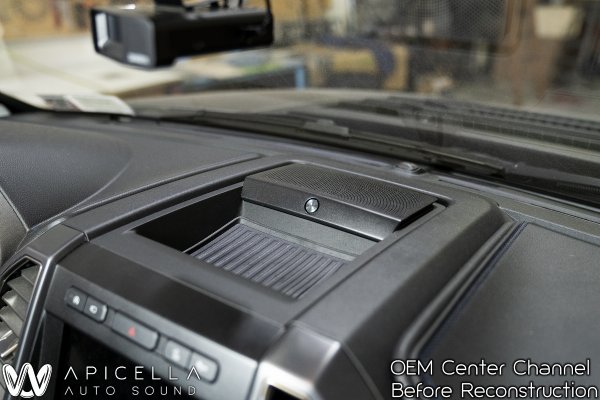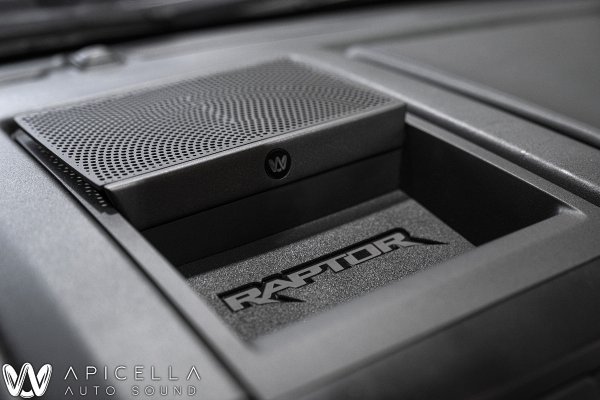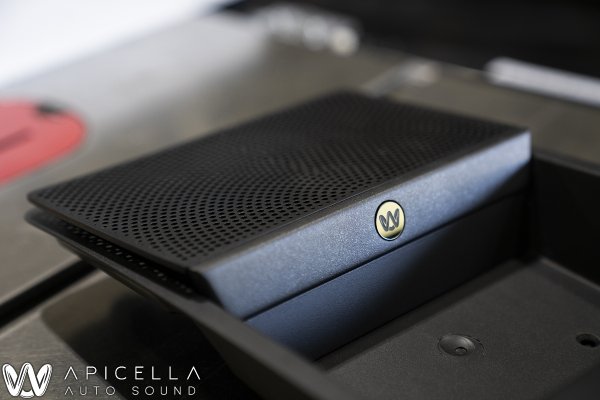Now, why a center channel is needed for an audio system if you care about what the passenger hears and why the factory location is not satisfactory..
This is copied and pasted from the build log for this car, so it might not mention why the custom center channel is necessary. I'll get that out of the way now, and the info below will help you understand why.
When doing an upmixed center channel, the center speaker needs to be able to play down to about 200hz (preferably lower) just as loudly as your side speakers. If It cannot play that low with the necessary output, the center channel will not be able to do its job correctly and will be a bit of a waste. The OEM center location cannot fit a beefy enough midrange WHILE adding a tweeter to pull this off.
The below is from the build log..
Now here is what sets this sound system apart from most.. The two-seat tune using a center channel with an upmixer featured in the newest Helix processors. Before I go into how we did this, let me explain what makes this different, special, and most definitely not easy.
It's important that we understand what the word "Stereo" actually means.
"Sound that is directed through two or more speakers so that it seems to surround the listener and to come from more than one source; stereophonic sound."
Stereo is when you have two speakers (no, not drivers. drivers are the individual "speakers." A speaker is a device that plays the full range of the audio spectrum), one on the left and one on the right. The left one gets the left signal, and the right one gets the right signal, and they share the common and in between information to varying degrees. When you play a stereo recording on a 2 channel (stereo) setup, you achieve the aforementioned "stereophonic sound." The speakers themselves disappear, and what you hear is a performance that is spread across the space between the two speakers (see image below). The "images" of the individual musicians in the photo are referred to as, well, Imaging, and the space they occupy is referred to as Staging. You guys have probably seen these terms thrown around before, this is their meaning and they are not the same and not interchangeable. Images exist inside the Stage. The images can sound as if they are very small (think the size of a baseball) and can seem like they are located anywhere in between the two speakers. It's pretty neat when you experience it for the first time, and once you do, you will never be able to listen without it.
So, now that we have covered what stereo is, we need to understand what its limitation is. That limitation is simple. There is only ONE exact point in the horizontal plane that is the sweet spot, and it is directly in the middle of the two speakers. If you are off to the side by a few inches, it is not the sweet spot. As you start going further and further from said sweet spot you introduce all sorts of issues. The most notable one is the stereo imaging and staging (as explained before) gets thrown out the window, comb filtering is introduced (nasty repeated logarithmic dips in the frequency response) that are caused by sound waves being out of time where you are located, polar response differing, and reflections being different from side to side. For me, and pretty much anyone, the biggest thing is going to be the imaging/staging getting ruined. This is EXACTLY what happens when we install a stereo in a car and sit in the driver or passenger seat since we are not directly between the two speakers. How does a high-end car audio stereo combat this? With a Digital Signal Processor, aka a DSP. There are MANY reasons to use a DSP in car audio systems, but they are more necessary today than ever before due to OEM's making swapping a radio nearly impossible. Whatever, that's a discussion for a different day. But a DSP will feature many tools to help us get the sound we want, including from our off-center seating positions. This feature is called Signal Delay, sometimes called Time Alignment (which personally, I don't like calling it that. We can not adjust time lol, but we can delay a signal). If we are sitting in the driver's seat (usually on the left side of the car), the sound from the left speaker is going to arrive at us before the sound from the right speaker does. How we fix that is by delaying the left speaker (usually by fractions of milliseconds in a typical car audio system) until the sound from both the left and right speakers arrive at us at the same time. This, along with level adjusting, independent channel eq, etc helps us achieve a stereo presentation in a car audio system. But, even with a DSP, a Stereo system is still Stereo, and the issues mentioned before don't go away. There is still only ONE sweet spot to listen to that system in that car. What if you want your passenger to have a good experience in your vehicle as well? Introducing the Upmixer. An upmixer, very simply put, is an algorithm that takes a given number of audio channels and turns it into more channels. There are many different types of upmixers, and all of them work differently and are usually after achieving a different goal. I'm not going to get into the differences, but we are after something specific with music.. gaining more than one sweet spot that allows for a presentation similar to stereo. How we do this for our purpose is to use an upmixer that separates the correlated signal (mono, center image, etc) from the uncorrelated signal (far left/far right). Frankly, this is not as simple as I'm making it out to be, and there are currently only 2 processors that are available on the car audio market that can do this properly. One is like 12 years old, and the others are the newer models that are a part of the Audiotec Fischer line of DSP's (Brax, Helix, & Match). Aside from them having the absolute best processors on the market hardware and software wise, they are constantly updating their line to include features that are needed/wanted in today's market. They introduced their "Real Center" upmixer last year and their "Virtual Channels" a bit later. Using these features we can create our own upmixer and use a center channel to get an accurate stage with accurate imaging from both the driver and passenger (and even rear) seats. Again, it is a LOT more involved than I just put it, but that is the gist of it.
Things to note for an upmixed center channel in a car audio system:
1) It needs to be able to play just as loud as your side speakers from about 200hz (preferably lower) all the way up to 20khz
2) No, your wimpy factory speaker will not work
3) The center is going to have the main content, so do not skimp and go with a cheaper speaker here
4) No, just summing left and right to a center channel will not get you imaging/staging from both seats. This will actually be detrimental to both seats.
5) You also need the ability to apply all-pass filters to individual speakers
6) To be perfectly honest, a 1 seat tune without the center will pretty much definitely sound better in its sweet spot than any 2 seat tune from any of its sweet spots. It could be a drastic difference, but a good 2 seat setup it should only be a mild difference. I have only heard two 2-seat setups to date that sounded as good as an equal 1 seat setup. One is Andy Wehmeyer's car (owner of Audiofrog), and the other is Natan Budiono's car (works for Harmon Kardon tuning the OEM Lexus audio systems). This car is the first time I have come very close, which I attribute to sitting down and actually crunching the numbers on how to formulate my own upmixer in the Helix software. Thankfully, that paid off and the 2 seat tune went perfectly without any hiccups.
Stereo system with Staging and Imaging explained. Remember, imaging is the individual "images", and they create and exist inside the "stage"









